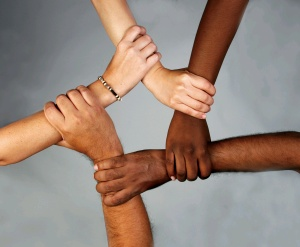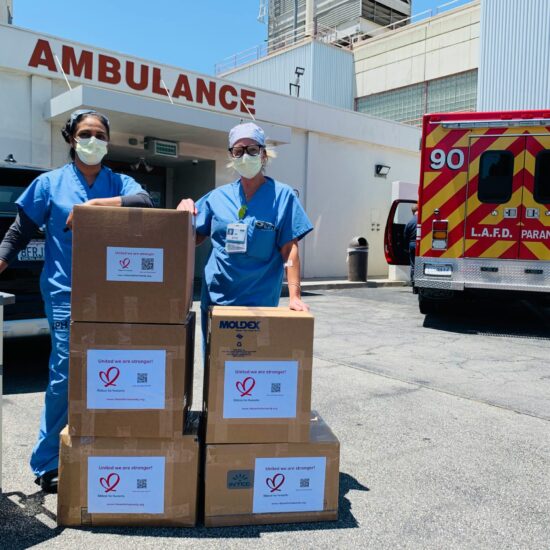
Maria E. Robinson, RN, BSN, MSN is a community /public health nurse in Maryland. She is Chair of Community Events for the National Association of Hispanic Nurses. . This June, she completed CHMP’s Media Training as a “Nurse Messenger” funded by AARP’s Center to Champion Nursing. This is her first guest blog for CHMP.
 According to the Centers for Disease Control and Prevention (CDC) there are close to 1.2 million people living with HIV today in the United States and 20%, or close to 200,000 people, are undiagnosed. If you don’t know you’re infected you can’t be treated. If your HIV positive and don’t practice safe sex you can infect others.
According to the Centers for Disease Control and Prevention (CDC) there are close to 1.2 million people living with HIV today in the United States and 20%, or close to 200,000 people, are undiagnosed. If you don’t know you’re infected you can’t be treated. If your HIV positive and don’t practice safe sex you can infect others.
This past June, I participated in The City Uprising Event which was sponsored by The JACQUES Initiative of the University of Maryland School of Medicine (UMB SOM) and Project SHALEM in conjunction with many community and faith-based organizations in Baltimore, Maryland. Organizers identified seven communities where they would focus their programming to raise awareness about HIV/AIDs. Each community would focus on educating the community about prevention, provide HIV testing and make referrals for services as needed.
I spent the entire day volunteering at the Esperanza Center in Fells Point, Maryland, a predominantly Hispanic community with residents from El Salvador, Mexico, Panama, Honduras, Columbia, and Puerto Rico. The Esperanza Center is a community health center providing health care to low income uninsured people.
Along with other people in the community, I stood proudly in my City Uprising volunteer T-shirt and distributed flyers outside encouraging people to come in and be tested for HIV and syphilis. As a Spanish speaking nurse my role as translator was critically needed throughout the day to translate for the non-Spanish speaking HIV testers and counselors so they could communicate with the mostly Spanish-speaking community members. We encouraged people to come in on their way to work or to stop in on their way to the grocery store or market. We promised them there will be no waiting; thanks to this well organized and well staffed event we delivered on that promise.
We offered a free boxed lunch to everyone who was tested. I overheard several people say that it was a good to get tested but getting a free boxed lunch was just as important. For some people it may have been their only meal that day.
There were many stories about the people who came to be tested. Each person’s story matters. One man who arrived to be tested was dressed in torn clothing, had poor hygiene and was drunk. His speech was incoherent. He lost his balance and fell to the floor in front of us. Another volunteer and I helped him up and escorted him to be evaluated by the health care team including the on-site substance abuse counselor. This encounter also required a Spanish translator and I stayed with him to assist in his care. He was referred to a drug treatment center for follow-up. While translating for a young Latino man I learned he had been a victim of sexual violence when he lived in El Salvador. The counselor arranged an appointment for him that same day at a STD clinic where he could get comprehensive care and another volunteer drove him to the location.
This day, like almost every day, as a Hispanic community/public health nurse who works in largely Hispanic communities, I was reminded of how important it is to advocate for a more diversified health care workforce in our country. I am proud to be a member of the National Association of Hispanic Nurses (NAHN) that works to recruit and retain a nursing workforce that reflects the communities of our nation. These goals work to assure quality healthcare for Hispanic residents.
It was an exhausting but satisfying day… I ended it with a delicious meal at a local Salvadorian restaurant with my good friend, which was nourishing for my mind, body and community/public health nursing spirit.








djmasonrn / August 9, 2011
Thank you for this powerful story, Maria. We know we need a more diverse workforce that will care about the needs of underserved communities and understand their cultural nuances. Diana Mason
/
Merrill Bodden / February 6, 2013
Syphilis is caused by the treponema pallidum sprichete. Even if it is considered a sexually transmitted disease, it isn’t always acquired through sexual contact. There are rare cases where the infectious organism is passed on through open wounds or lesions as point of entry. Syphilis may also be passed on from mother to fetus during pregnancy and childbirth. It is a sad fact, though, that 25 percent of fetuses born of syphilitic mothers end up in stillbirths, while the remaining 75 percent develop congenital syphilis which may aggravate into another medical complication if left untreated. Also, people with syphilitic sores who remain sexually active are at higher risk of acquiring HIV or AIDS.;
Look at the most up-to-date post on our blog
<http://www.foodsupplementcenter.com/ganoderma-side-effects/
/